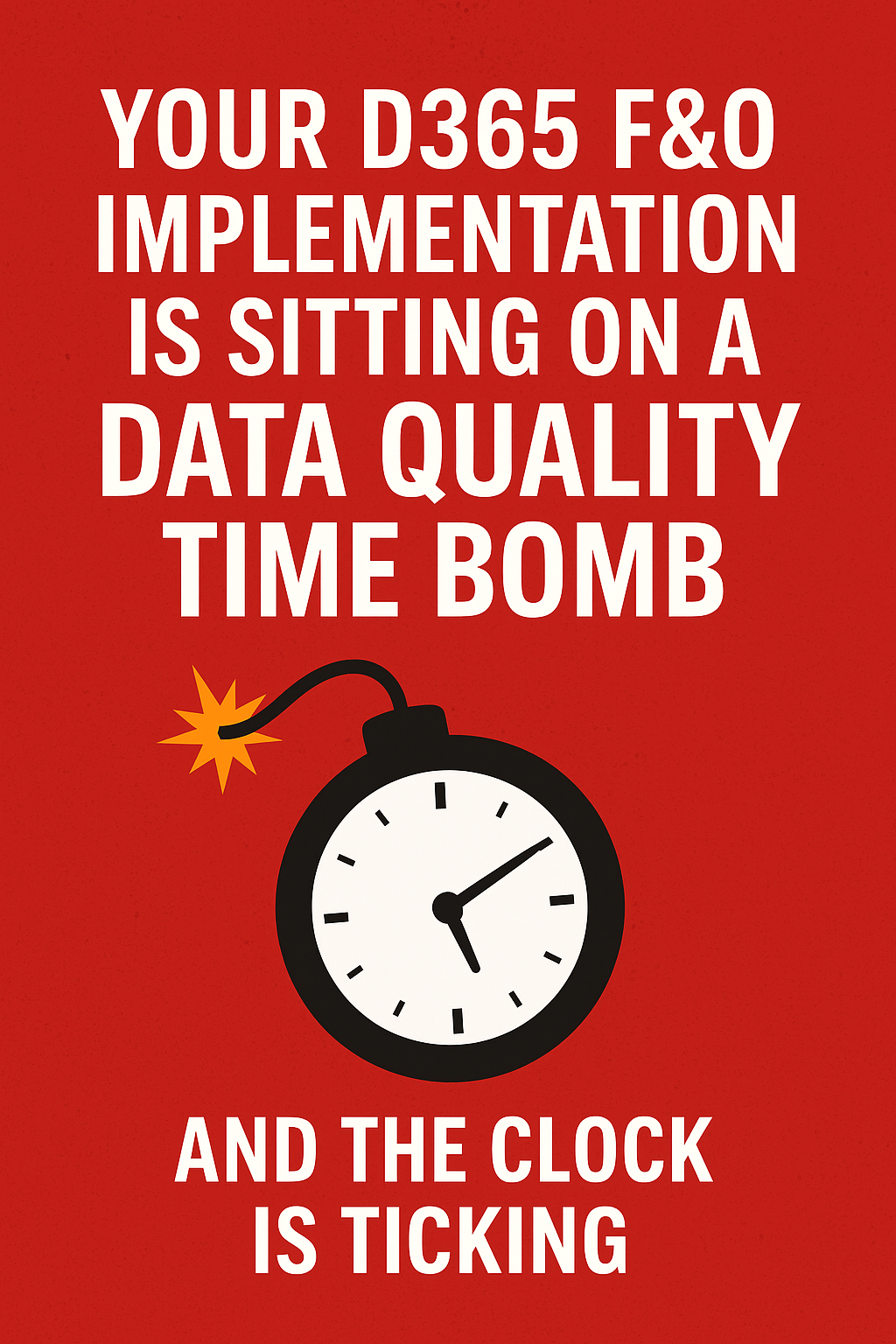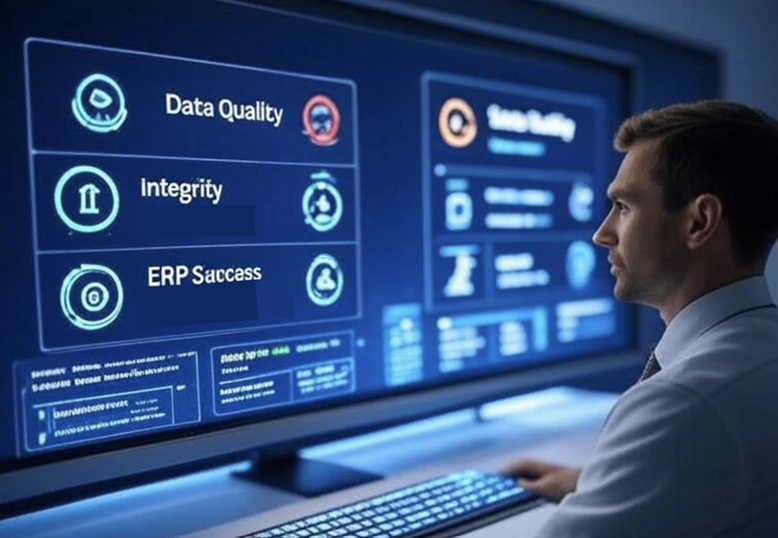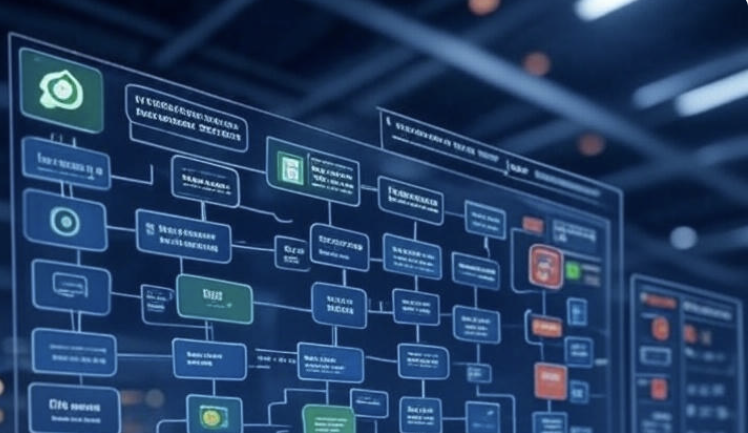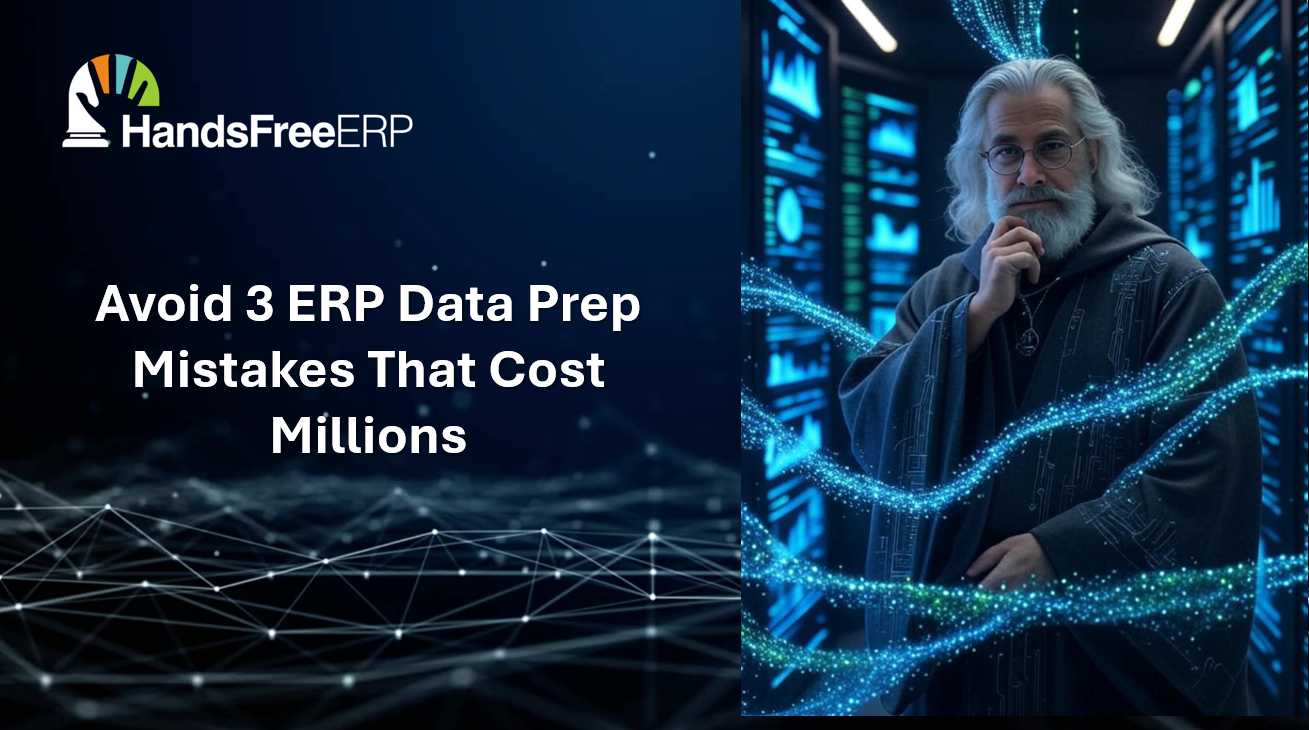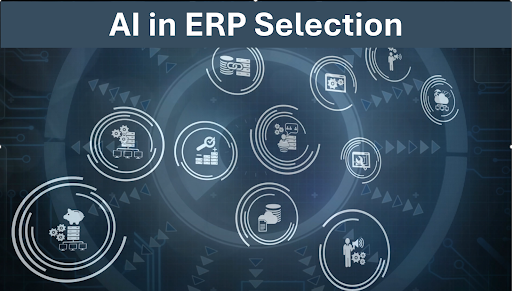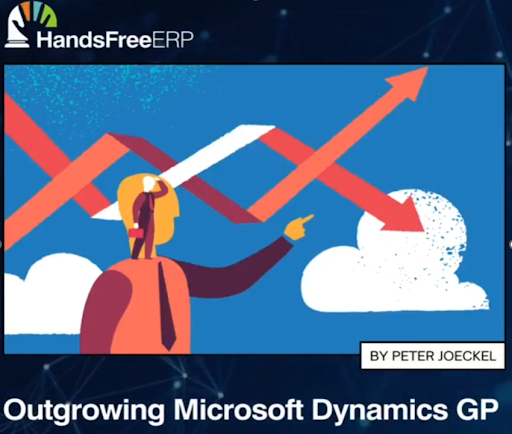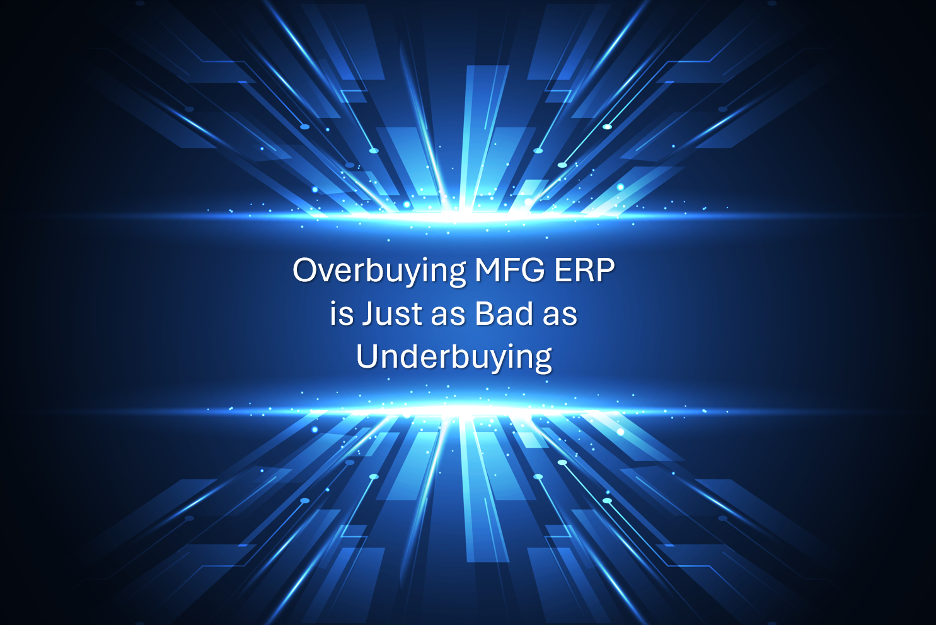USA's Renowned Woman Shaping the Future of ERP with Innovation, Strategy, and Simplicity
Conglomerate Magazine Recognized HandsFree ERP Chief Operating Officer and Partner, Kati Hvidtfeldt as the Renowned Woman Shaping the Future of ERP with Innovation, Strategy, and Simplicity in the USA.

FROM CURIOSITY TO COMMAND: THE MAKING OF AN ERP PIONEER
In an industry where complexity often reigns and failed implementations cost companies millions, Kati Hvidtfeldt stands as a beacon of clarity and transformation. Her journey from the early days of Navision Software to co-founding HandsFree ERP represents more than a career progression. It embodies a fundamental shift in how businesses should approach one of their most critical technology decisions.
"I've always believed that curiosity is the foundation of growth," Kati reflects on the mindset that has defined her professional trajectory. This philosophy of perpetual learning has carried her through decades of technological evolution, from the nascent days of CRM workloads to leading revolutionary changes in how enterprises select and implement their core business systems.
Her background uniquely combines computing and business acumen, creating a perspective that views technology not as an end goal but as a strategic tool to make processes faster, smarter, and more efficient. This dual lens has proven invaluable in an industry where technical capability must constantly align with business value.
THE NAVISION YEARS: LESSONS IN SIMPLIFICATION AND SCALE
Kati's entry into the ERP space came through Navision Software, a company that would later become part of Microsoft's portfolio in 2002. What began as a focus on CRM-specific workloads evolved into leadership of the entire NAV product line, and it was during this period that the seeds of her future vision were planted.
The results spoke volumes about her approach. Under her leadership, the team doubled NAV's revenue from $150 million to $300 million in just three years. But the numbers tell only part of the story. The real transformation came through a deliberate strategy of simplifying complexity.
"We streamlined the pricing model, made the product's value easier to understand, and focused heavily on partner productivity and scalability," Kati explains. These weren't just operational tweaks. They represented a fundamental philosophy: when you remove unnecessary friction and focus on genuine value delivery, growth follows naturally.
During those transformative years, Kati witnessed firsthand the challenges that would later inspire HandsFree ERP. Organizations struggled with the same recurring problems, including overwhelming complexity, lack of clarity in vendor comparisons, and painfully slow decision-making processes. The traditional consulting model, with its months of workshops and subjective analyses, seemed increasingly out of step with how modern businesses needed to operate.
BREAKING BARRIERS: LEADERSHIP IN A TECHNICAL WORLD
As a woman leading in a highly technical and competitive industry, Kati has navigated challenges that extend beyond spreadsheets and system architectures. She acknowledges the reality of walking into rooms where biases still exist, whether conscious or unconscious.
"In those moments, I've learned that as a woman in a highly technical field, you often need to demonstrate your value early and consistently," she observes with characteristic directness. Rather than viewing this as a setback, Kati transformed it into an opportunity to bring something different to the table.
Her strategy has always centered on deep domain knowledge and clear contribution. When you arrive prepared, bring genuine insight, and offer new perspectives grounded in experience, substance ultimately trumps stereotypes. Over time, credibility builds its own momentum.
Confidence plays an equally crucial role in her approach. "You have to believe in your voice and not wait for permission to use it," Kati emphasizes. This isn't about being the loudest voice in the room. It's about sharing ideas grounded in experience and value, creating space where people listen and biases fade into the background.
Her perspective on leadership challenges offers guidance for others facing similar obstacles. Leadership isn't about conforming to existing expectations. It's about shaping conversations through confidence, clarity, and meaningful contribution. This philosophy has allowed her not merely to survive but to thrive in spaces where women remain underrepresented.
EMPOWERMENT THROUGH COLLABORATION: A LEADERSHIP PHILOSOPHY
Kati describes her leadership style as empowering and collaborative, built on a foundation of trust and freedom. She believes in giving talented individuals the room to experiment, learn, and discover solutions that top-down direction could never prescribe.
"When you give talented individuals room to experiment and learn, they often discover better solutions than any top-down direction could provide," she notes. Her role centers on creating an environment that is supportive, open, and available when team members need guidance or a sounding board.
Her decision-making philosophy emphasizes informed action over endless analysis. While she ensures solid understanding through her own knowledge or by bringing in appropriate experts for meaningful dialogue, she refuses to get trapped in the paralysis of seeking perfect certainty.
"I like to ensure there's a solid understanding of the topic, then I'll always weigh the pros and cons, but I'd rather make a well-grounded decision and adjust as we go," Kati explains. This approach keeps her teams agile, innovative, and resilient, which proves essential in fast-moving industries like technology.
Perhaps most telling is her perspective on failure. "To me, there are no failures, only learnings," she states. As long as you have contingency plans and the courage to adapt, every decision moves you forward. This mindset creates psychological safety for teams to innovate without fear, knowing that missteps are simply data points on the path to success.
REDEFINING SUCCESS: SIGNIFICANCE OVER STATUS
When asked about success, Kati's answer reveals the values driving her work. For her, success centers on significance rather than status, focusing less on monetary rewards and more on having a clear purpose of helping others succeed.
"That's why HandsFree ERP means so much to me," she explains with evident passion. "I've seen how failed projects can hurt companies and people, and our mission is to prevent that. If we can save one company from closing its doors or one person from project burnout, that's real success."
This definition of success illuminates why HandsFree ERP exists and how it operates. The platform wasn't built primarily as a business opportunity. It emerged from witnessing genuine pain in the market and recognizing that existing solutions failed to address root causes.
Kati's perspective on success aligns what she does every day with personal purpose, creating the kind of alignment that generates both fulfillment and sustainable impact. It's a philosophy that resonates through every aspect of how HandsFree ERP serves its clients.
THE BIRTH OF HANDSFREE ERP: SOLVING A BROKEN PROCESS
HandsFree ERP was born from years of witnessing how broken and painful the ERP decision-making process had become. Companies were spending months, sometimes years, just trying to gather requirements, compare vendors, and make sense of information that was often biased or incomplete.
Most tools and consultants in the market still relied on manual spreadsheets, generic RFPs, or vendor-driven demos that didn't truly reflect a company's unique needs. The process consumed enormous resources while frequently leading to poor outcomes.
"We wanted to change that," Kati states simply. The vision was clear: automate and accelerate the most time-consuming part of ERP selection, which involves requirements definition and vendor alignment, while giving clients control and transparency.
The goal was ambitious yet straightforward. Make ERP decisions data-driven rather than opinion-driven. Cut 90% of the effort that selection traditionally required. Improve both accuracy and confidence in the final choice.
Working with business partner Peter Joeckel, whose real-life ERP rescue and implementation experiences complemented her own expertise, Kati built a platform designed to make ERP projects less risky, more successful, and genuinely empowering for the companies making these critical decisions.
AUTOMATION MEETS EXPERTISE: THE HANDSFREE METHODOLOGY
Traditional ERP evaluations are slow, subjective, and resource-draining. Companies often spend months in workshops, spreadsheets, and vendor meetings just to reach a shortlist. HandsFree ERP flips that model entirely.
The platform has automated the core of the process using smart discovery and mapping tools that capture business needs in hours instead of weeks. These tools translate organizational needs into structured, vendor-neutral requirements, then instantly align them with what each ERP system can actually deliver.
"This means clients can see where each vendor fits or falls short objectively, before the demos even start," Kati explains. Once that clarity exists, HandsFree guides clients through a structured, fact-based selection process that includes demo scoring, total cost comparisons, and decision documentation, all managed in one digital workspace.
What truly distinguishes HandsFree ERP is how it balances automation with human expertise. The platform handles what machines do best: collecting requirements, mapping capabilities, analyzing vendor fit, and generating data-driven insights. This ensures every recommendation is consistent, traceable, and free from vendor influence or personal bias.
Then experts step in where human judgment proves essential: interpreting nuances, validating assumptions, and guiding strategic decisions around change readiness or risk management.
"Automation gives us objectivity and speed, while human expertise adds context and confidence," Kati notes. Together, they create an unbiased and transparent process that helps clients make ERP decisions they can fully stand behind.
The platform also maintains a knowledge base of past projects and benchmarks, meaning every new client benefits from collective intelligence rather than just one consultant's opinion. Instead of paying for manual effort, clients pay for insight and acceleration, getting to confident ERP decisions in days instead of months.
THE FIVE DEADLY SINS OF ERP SELECTION
Through her work with HandsFree ERP, Kati has identified recurring mistakes that doom ERP projects before implementation even begins. Understanding these pitfalls provides crucial insight into why so many ERP initiatives fail to deliver promised value.
The first mistake is starting with vendors instead of needs. Many companies jump straight into demos or rely on partner recommendations without clearly defining what success looks like for their specific business. This leads to mismatched systems and scope creep later in the process.
Second, organizations frequently over-customize in their minds. Teams describe their current "as-is" processes instead of envisioning "to-be" processes, effectively locking themselves into old habits. They end up trying to make new ERP fit their legacy way of working rather than using the implementation as an opportunity for transformation.
Third, companies continue using outdated or generic RFPs. Boilerplate requirement lists don't reflect what actually matters to the organization. Vendors all score well on these generic criteria, but the results prove meaningless for actual decision-making.
Fourth, organizations let vendors control the demo narrative. Demos become marketing shows instead of real comparisons. Without structured scripts tied to the company's priorities, teams leave impressed but unclear about whether the system actually meets their needs.
Finally, companies consistently underestimate total cost and change impact. They budget for licenses and implementation but forget about data migration, integration, user training, and ongoing optimization, all of which can double the real cost of the project.
"At HandsFree ERP, we built our entire methodology to help clients avoid these traps by putting structure, objectivity, and speed into every step of the process," Kati explains. Each element of the platform directly addresses one of these common failure points.
NEUTRALITY AS A BUSINESS MODEL
In an industry where consulting firms often have partnerships or financial incentives tied to specific vendors, HandsFree ERP's commitment to neutrality stands out as both unusual and essential.
"Neutrality is absolutely core to what we do," Kati emphasizes. From day one, the company was built to eliminate bias that often creeps into ERP advising. Unlike traditional consultants, HandsFree ERP remains completely independent. The company doesn't sell, resell, or take commissions from any software provider.
The platform itself reinforces that neutrality through data-driven comparisons rather than opinions. Every vendor score or recommendation comes from structured business requirements, objective fit analysis, and transparent criteria that clients can see and verify for themselves.
HandsFree ERP also centers every engagement around the client's strategic goals and risk profile, not just system features. Advisors act as facilitators and educators, ensuring clients fully understand trade-offs, total cost implications, and long-term scalability before making decisions.
"We make our process auditable. Clients can trace exactly how every recommendation was reached," Kati notes. That transparency builds trust and keeps the focus where it belongs: on the client's success rather than the vendor's win.
This approach represents more than good business ethics. It's a fundamental redesign of the consulting model, one that aligns the advisor's incentives completely with client outcomes.
NAVIGATING THE ERP LANDSCAPE OF 2025
As someone who has witnessed decades of ERP evolution, Kati brings informed perspective to the trends shaping the industry today. The ERP landscape in 2025 is being reshaped by several powerful forces.
First, AI-driven automation is moving from hype to reality. Systems are now intelligently predicting demand, optimizing workflows, and even writing parts of their own business logic. This shift transforms ERP from a system of record to a system of intelligence.
Second, composability is becoming mainstream. Instead of one massive ERP, companies are adopting modular, interoperable platforms that let them plug in best-of-breed applications without losing integration or data integrity. This flexibility allows organizations to build systems that fit their specific needs rather than conforming to rigid vendor architectures.
Third, industry-specific cloud platforms are gaining traction. Organizations increasingly demand solutions built for their unique verticals rather than one-size-fits-all systems. This specialization delivers better out-of-the-box functionality and faster time to value.
Fourth, data accessibility and analytics have moved front and center. ERPs are evolving into real-time decision engines rather than merely transaction systems. The ability to extract insights from operational data increasingly determines competitive advantage.
Finally, there's strong focus on business agility and user experience. Companies want intuitive, low-code tools that empower non-technical teams to adapt processes quickly.
"The winners in this new ERP era will be those who combine intelligent automation, modular flexibility, and user empowerment, turning ERP from a back-office system into a true driver of innovation and growth," Kati predicts.
AI AND AUTOMATION: FROM REACTIVE TO PROACTIVE
AI and automation are fundamentally redefining both ERP strategy and implementation. Traditionally, ERP was about recording transactions. Now it's about anticipating and optimizing them.
"AI is moving ERP from reactive to proactive," Kati explains, "using predictive analytics to forecast demand, flag risks, and even recommend process changes before problems occur." This shift represents a fundamental change in how ERP systems create value for organizations.
On the implementation side, automation is collapsing timelines. Intelligent discovery tools can capture business processes automatically, generate configuration blueprints, and even simulate workflows, cutting months off traditional implementation cycles. This acceleration means companies can deploy systems faster, with fewer errors, and adapt continuously rather than waiting for large, disruptive upgrades.
AI is also improving user adoption through natural language interfaces and personalized insights, making ERP more intuitive and human-centered. In the near future, ERP systems will act more like digital co-pilots, learning from users and dynamically adjusting to how the business operates.
"Ultimately, AI and automation are making ERP less about technology deployment and more about business enablement," Kati notes, "helping organizations move from managing data to intelligently orchestrating their entire enterprise."
THE CLOUD MIGRATION IMPERATIVE
For organizations transitioning from on-premise to cloud ERP systems, Kati offers advice grounded in hard-won experience. The biggest mistake companies make is treating the migration as a technical project rather than a business transformation.
"Treat it as a transformation, not a technical migration," she emphasizes. Too many companies focus on moving the system instead of rethinking how the business can operate in a modern, connected environment.
She recommends starting by re-evaluating processes. Don't just lift and shift old inefficiencies. Use the move to simplify, standardize, and align with best practices built into the cloud platform.
Second, involve end users early. Their input drives better design decisions and accelerates adoption later.
Third, plan for data quality and integration upfront. Cloud systems thrive on clean, connected data, and poor data migration is one of the biggest causes of post-go-live pain.
Fourth, rethink security and governance models. Cloud doesn't mean less control. It means different control, with shared responsibility and continuous monitoring.
Finally, ensure change management and training are as strong as the technology plan. Cloud ERP brings faster updates and new capabilities. Success depends on how quickly people can adapt and take advantage of them.
"Use the migration as a catalyst for modernization, not maintenance," Kati advises, encapsulating her philosophy that every technical project should drive broader business improvement.
DATA AS THE HEARTBEAT OF EXCELLENCE
In Kati's view, data analytics has become the heartbeat of operational excellence in ERP. Modern ERP systems don't just record transactions. They turn data into actionable intelligence that drives faster, smarter decisions.
However, insights are only as good as the data behind them. Data quality and migration prove critical to realizing the analytical potential of modern ERP. Clean, accurate, and well-structured data ensures analytics reflect reality rather than errors or inconsistencies.
"During cloud migrations or ERP upgrades, careful data mapping, cleansing, and validation are essential to maintain trust in the system's insights," Kati explains. Without this foundation, even the most sophisticated analytics tools produce questionable results.
When analytics are built on reliable data, leaders gain real-time visibility into inventory, production, financials, and customer behavior, enabling proactive decision-making. Predictive analytics further identifies trends, forecasts demand, and flags risks before they become problems, shifting organizations from reactive to preventive management.
Data insights also support continuous improvement. By analyzing performance across processes, companies can standardize best practices, measure impact, and optimize operations systematically.
"Ultimately, ERP becomes a system of insight and action, where quality data drives operational excellence, ensures reliable forecasting, and aligns strategy with execution across the enterprise," Kati notes, describing the full potential of data-driven operations.
THE ERP SUCCESS FRAMEWORK: BEYOND TECHNOLOGY
One of Kati's most significant contributions to the ERP field is recognizing that project failure isn't primarily a technology problem. It's a disconnect between theoretical advice, cultural readiness, and practical application.
The ERP Success Framework that HandsFree ERP has developed rests on three foundational pillars that stabilize and improve ERP outcomes: Culture and Mindset, Pre-ERP Projects, and ERP Project Practical Advice with Tips and Tricks.
This framework represents genuine innovation in the ERP space, though not the kind typically celebrated in technology circles. "ERP project failure is not a technology problem," Kati states clearly. "It's a disconnect between theoretical advice, cultural readiness, and practical application."
By aligning company culture, necessary pre-work, and practical implementation methods, ERP success rates can finally improve beyond the industry's stagnant norms. These elements represent game changers for an industry where failure rates have remained disturbingly high for decades.
Kati's definition of innovation in the ERP space extends far beyond just technology. It encompasses the human, organizational, and methodological elements that determine whether technology investments actually deliver value.
SUCCESS STORIES: ACCELERATION IN ACTION
The proof of HandsFree ERP's approach comes through client results. One story particularly highlights the speed and precision the platform brings to critical decisions.
A client approached HandsFree with plans to begin their ERP project in 2026. They needed help preparing requirements and budget estimates for board approval. Using the platform, they completed requirements gathering in a fraction of the usual time, nearly 90% faster than traditional methods.
The results were so clear and accurate that their board gained immediate confidence in the project, allowing them to accelerate their ERP timeline by a full year. They're now in the middle of implementation, one year ahead of schedule.
Other success stories demonstrate similar acceleration. One organization completed their full ERP assessment in just one day. Another finished their assessment over a single weekend to meet a critical board submission deadline.
"These examples show that when you remove the manual complexity and subjectivity from ERP preparation, companies can move decisively, turning what used to take months into days, with full clarity and confidence," Kati explains.
These aren't just efficiency gains. They represent fundamental transformation in how organizations can approach critical technology decisions, with implications for competitive advantage and strategic agility.
A MESSAGE TO HESITANT LEADERS
For business leaders hesitant to re-evaluate their ERP systems, Kati offers a message that is both challenging and encouraging. Standing still has become the biggest risk.
"The pace of change in technology, markets, and customer expectations means that what worked five years ago may now be holding your business back," she observes. Modern ERP isn't just a back-office upgrade. It's a foundation for agility, innovation, and competitive advantage.
The question isn't whether you need a new system, Kati argues. It's whether your current system can keep up with where your business is going.
Re-evaluating doesn't have to mean disruption or massive budget commitment. With today's tools like HandsFree ERP, organizations can assess needs, benchmark performance, and explore modern options quickly and objectively, without vendor pressure or wasted effort.
"The companies thriving today are those that treat ERP not as a cost center, but as a strategic enabler, a living platform that evolves with the business," Kati notes. Reassessment is not a sign of failure. It's a sign of leadership.
This message reflects her broader philosophy that technology decisions should enable business strategy rather than constrain it, and that periodic reassessment represents healthy organizational practice rather than admission of past mistakes.
VISION FOR THE FUTURE
Looking ahead, Kati's vision for HandsFree ERP centers on becoming the global standard for intelligent ERP decision-making. She envisions a platform that empowers organizations of every size and geography to make confident, data-driven technology choices in days instead of months.
The company continues expanding its mission to tackle high failure rates in ERP projects while scaling impact through new partnerships. They're continually uncovering root challenges that derail projects and developing solutions to address them.
"What excites me most is the opportunity to make a real difference in the lives of people and companies: helping teams succeed, reducing burnout, and enabling organizations to thrive," Kati shares. That pursuit of meaningful impact is both profoundly satisfying and motivating.
This vision extends beyond simply growing a successful business. It's about fundamentally changing how an industry operates, reducing waste, and helping organizations achieve outcomes that currently elude the majority of ERP implementations.
HandsFree ERP isn't just about simplifying ERP selection. It's about redefining how digital transformation decisions are made across the world: faster, smarter, and completely client-controlled.
THE LEGACY OF PURPOSEFUL INNOVATION
Kati Hvidtfeldt represents a new generation of technology leaders who recognize that innovation extends far beyond code and algorithms. Her career demonstrates that the most transformative changes often come from rethinking processes, eliminating unnecessary friction, and relentlessly focusing on client success.
Her journey from Navision to HandsFree ERP illustrates how deep industry experience, when combined with empathy for client challenges and courage to challenge established models, can create genuine market transformation.
Through HandsFree ERP, she is tackling one of the enterprise technology world's most persistent problems: the unacceptably high failure rate of ERP implementations. By addressing root causes rather than symptoms, by emphasizing culture and readiness alongside technology, and by maintaining unwavering neutrality in vendor selection, she's creating a new standard for how organizations should approach these critical decisions.
Her leadership style, emphasizing empowerment and learning over command and control, creates teams capable of discovering solutions that rigid hierarchies could never prescribe. Her definition of success, centered on significance rather than status, ensures that business growth aligns with genuine value creation.
As organizations worldwide continue grappling with digital transformation, leaders like Kati provide essential guidance on maintaining focus on what truly matters: helping clients succeed, empowering teams, and creating lasting positive impact.
The future of ERP, and enterprise technology more broadly, will be shaped by leaders who understand that technology serves business, not the other way around. Kati Hvidtfeldt's career provides a compelling roadmap for achieving this balance, demonstrating that principled leadership, relentless focus on client success, and willingness to challenge industry norms can drive meaningful change that benefits organizations and individuals alike.
HandsFree ERP is dedicated to supporting clients with their ERP initiatives, enabling companies to seamlessly connect users with their ERP partners. By utilizing skilled professionals, streamlined processes, and cutting-edge tools, HandsFree ERP significantly boosts the success rates of ERP projects.



